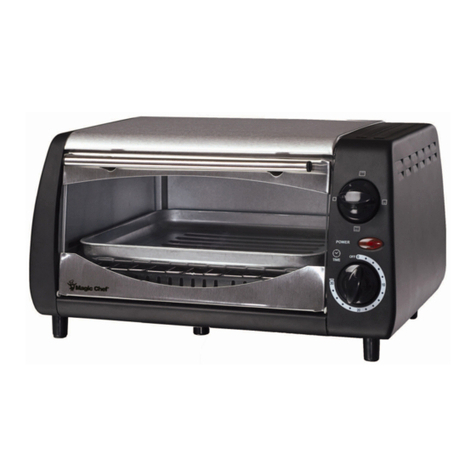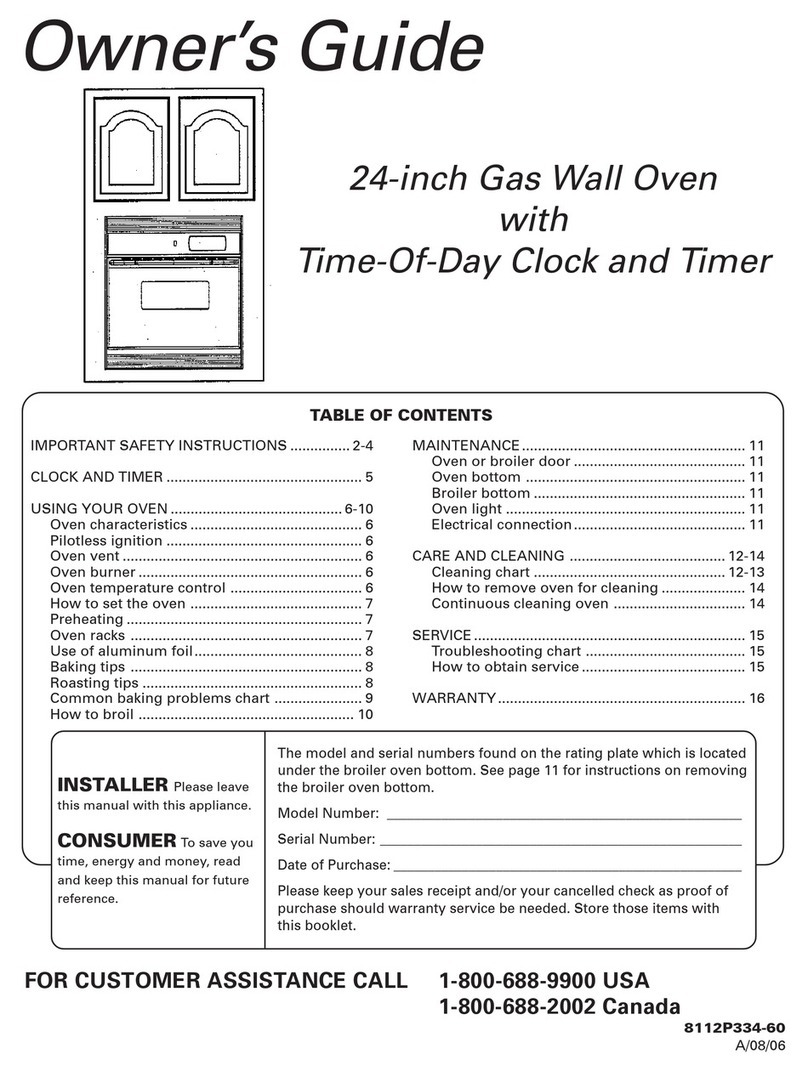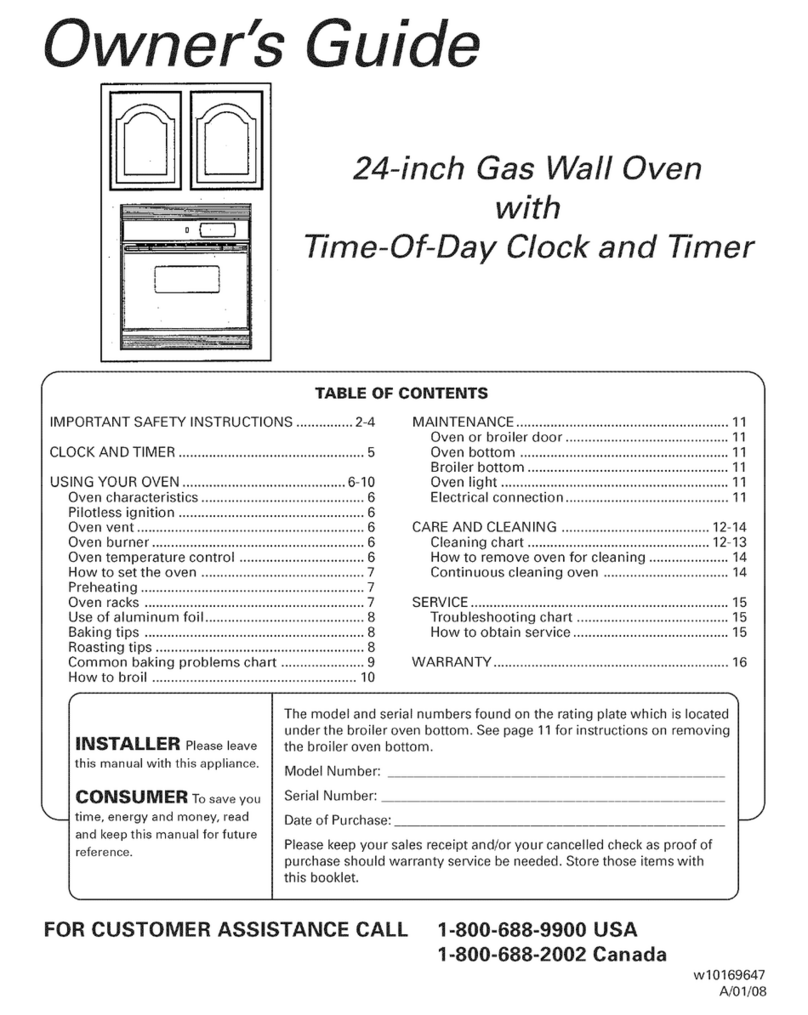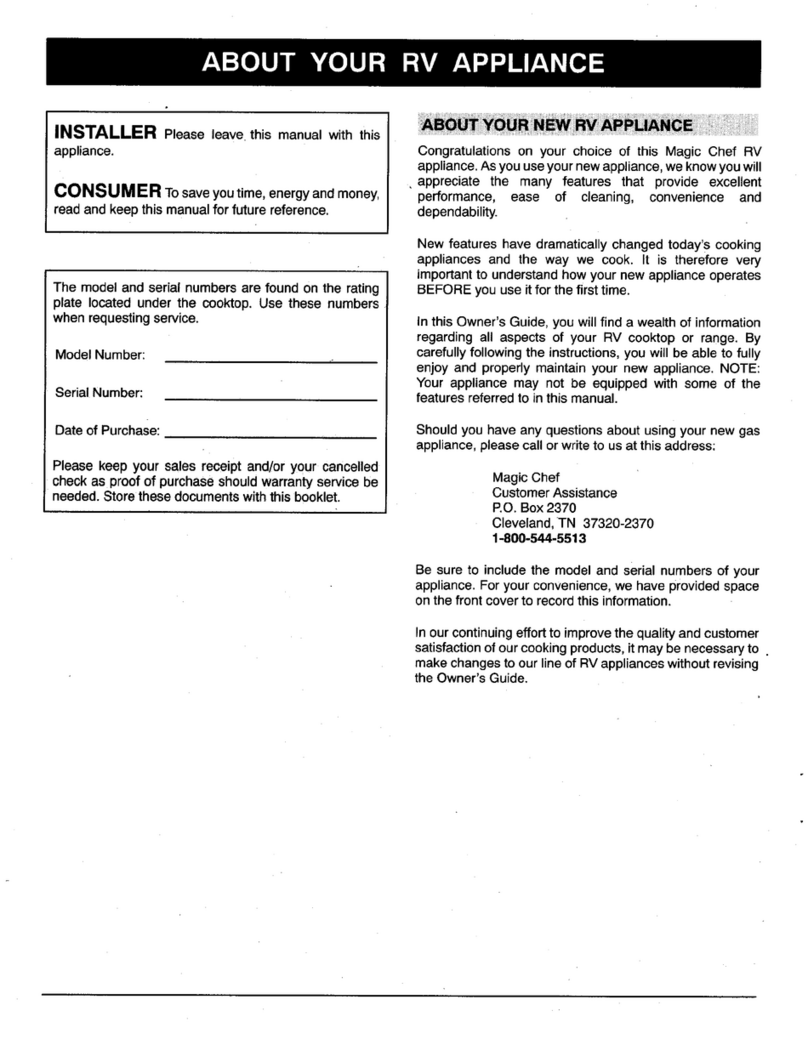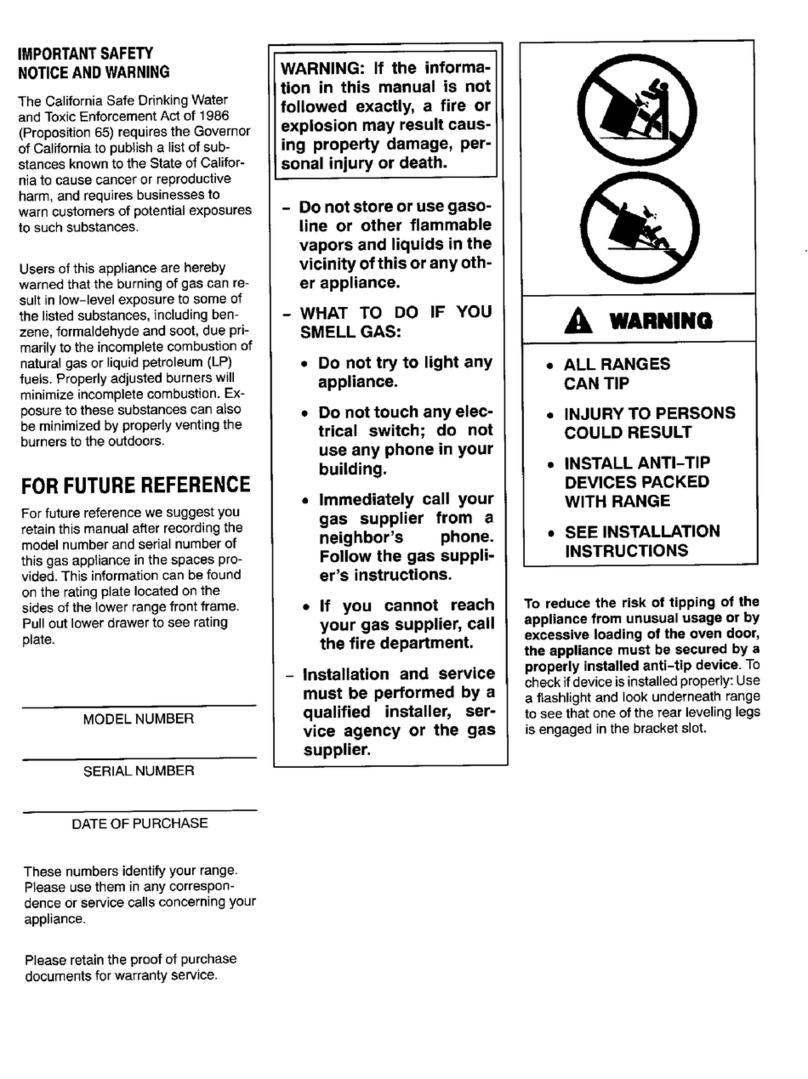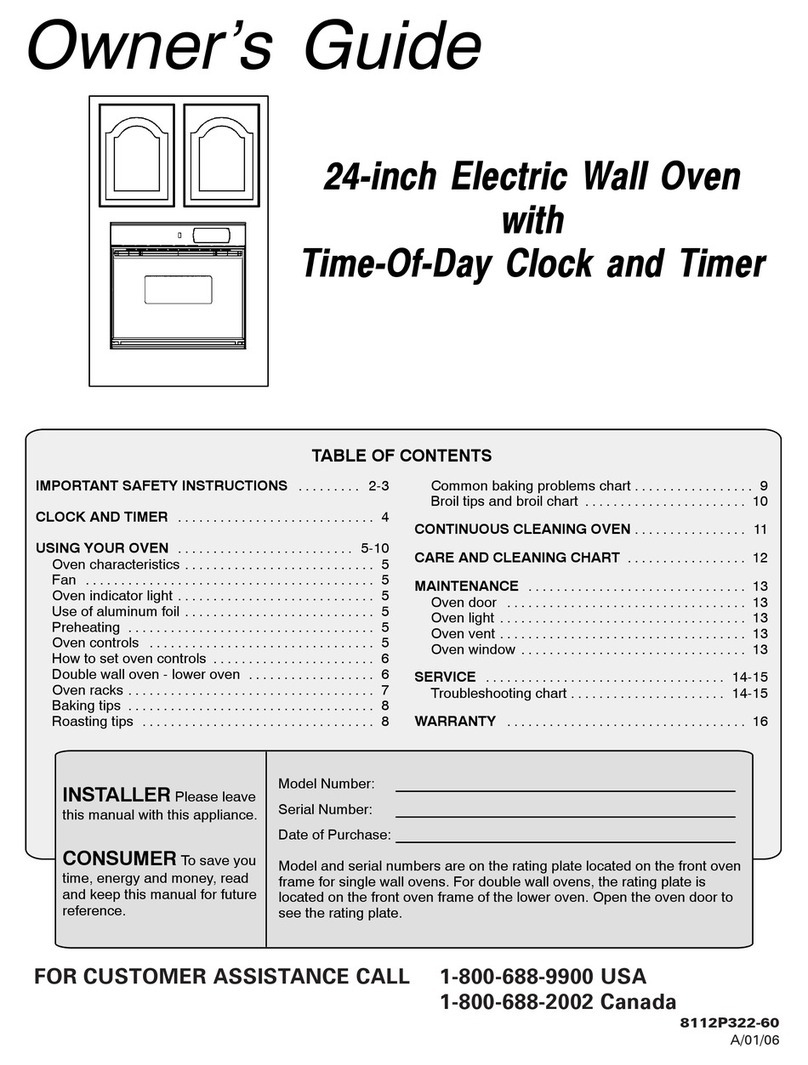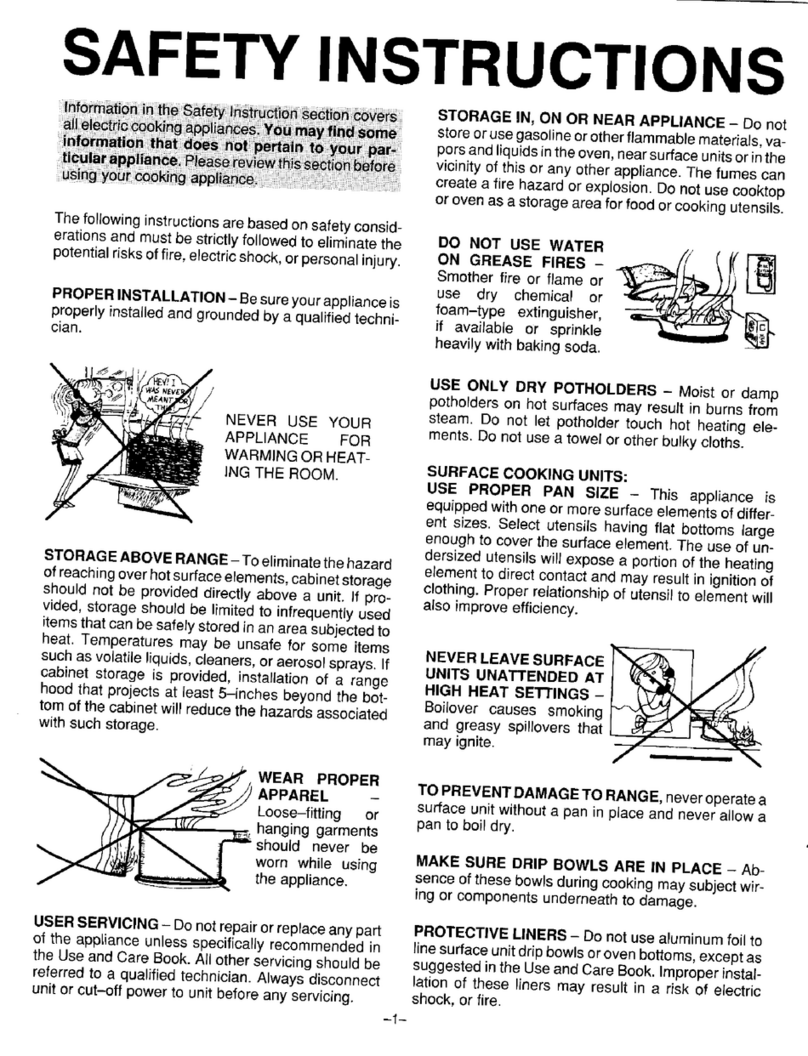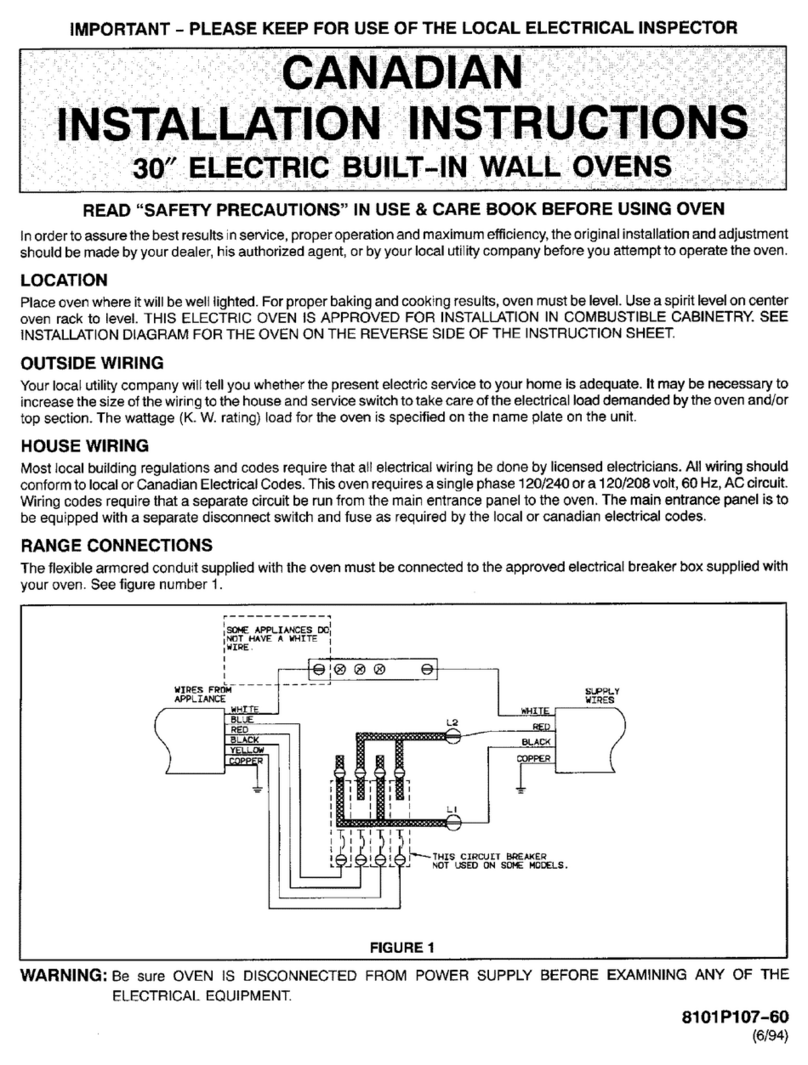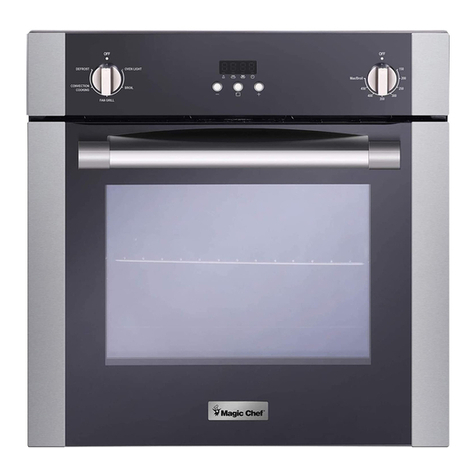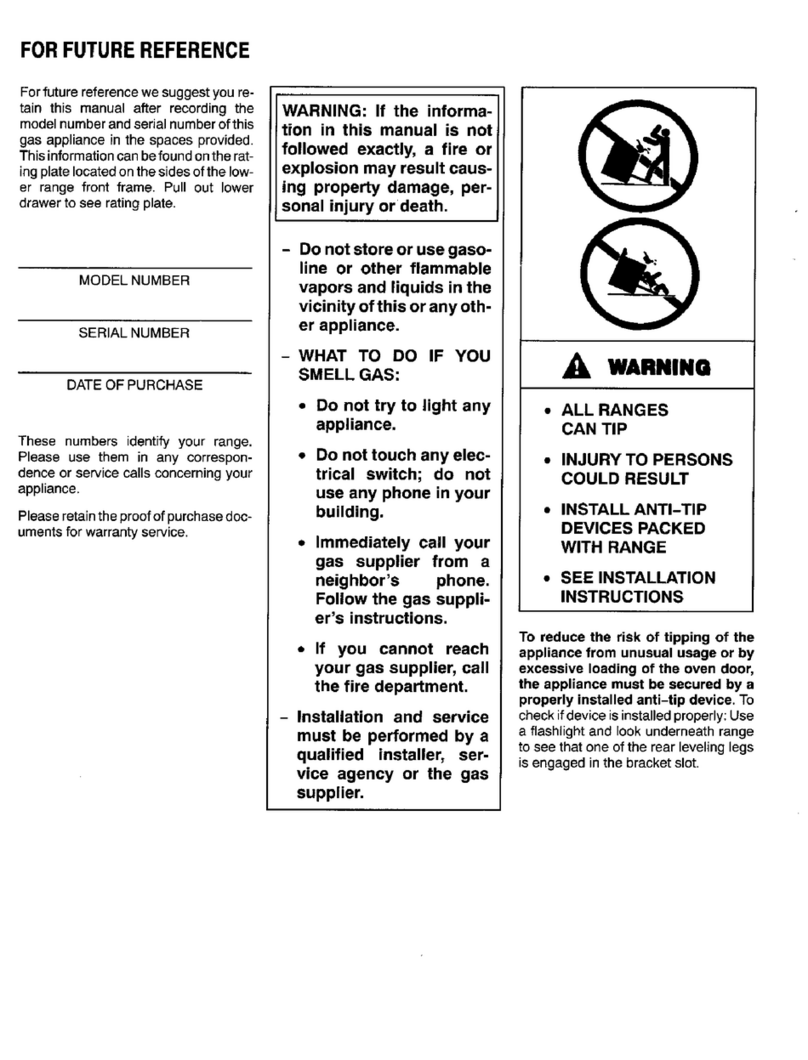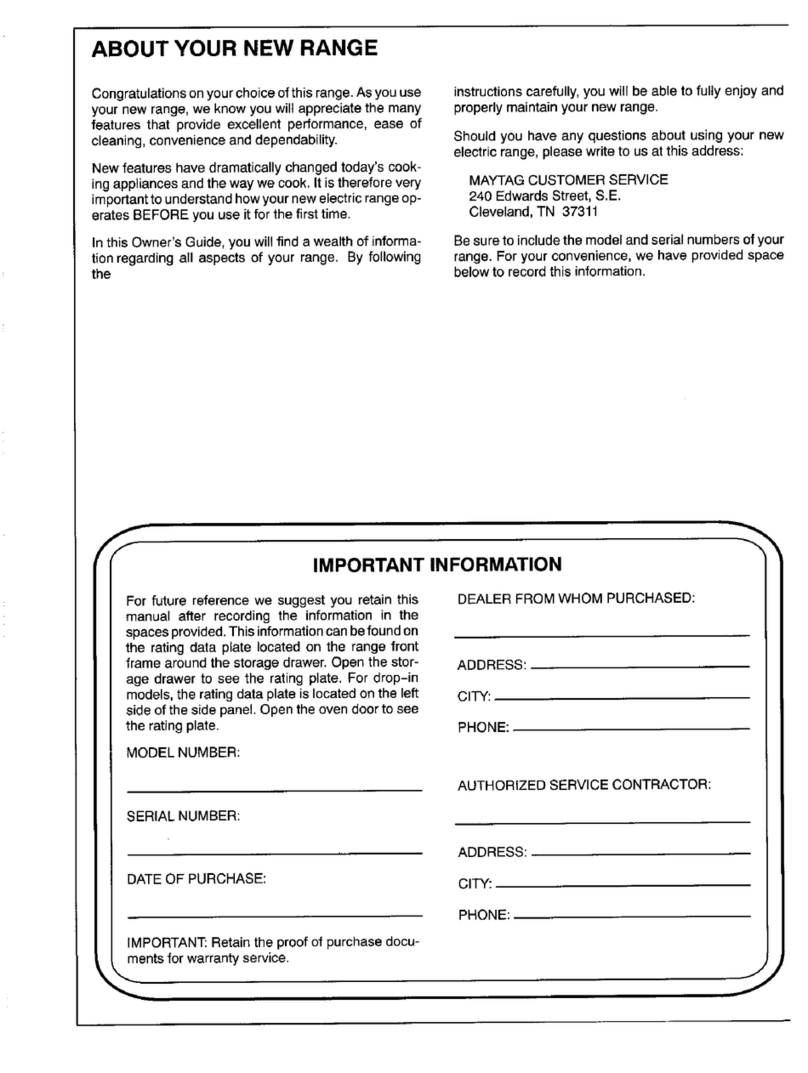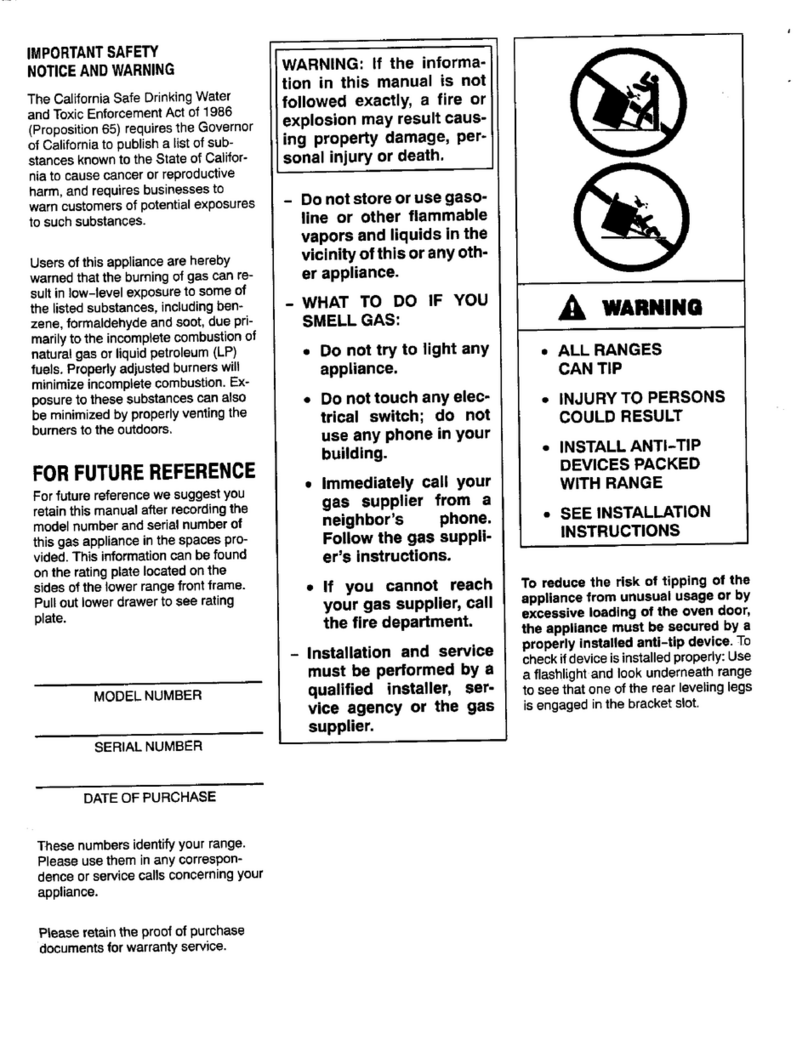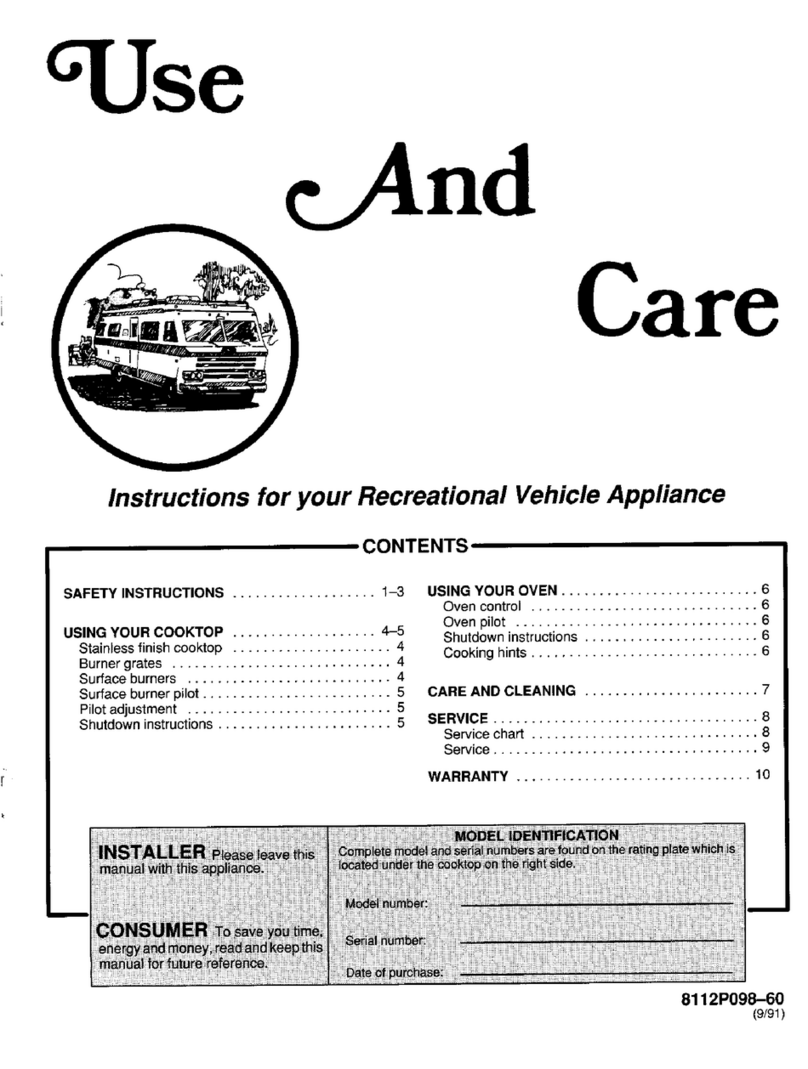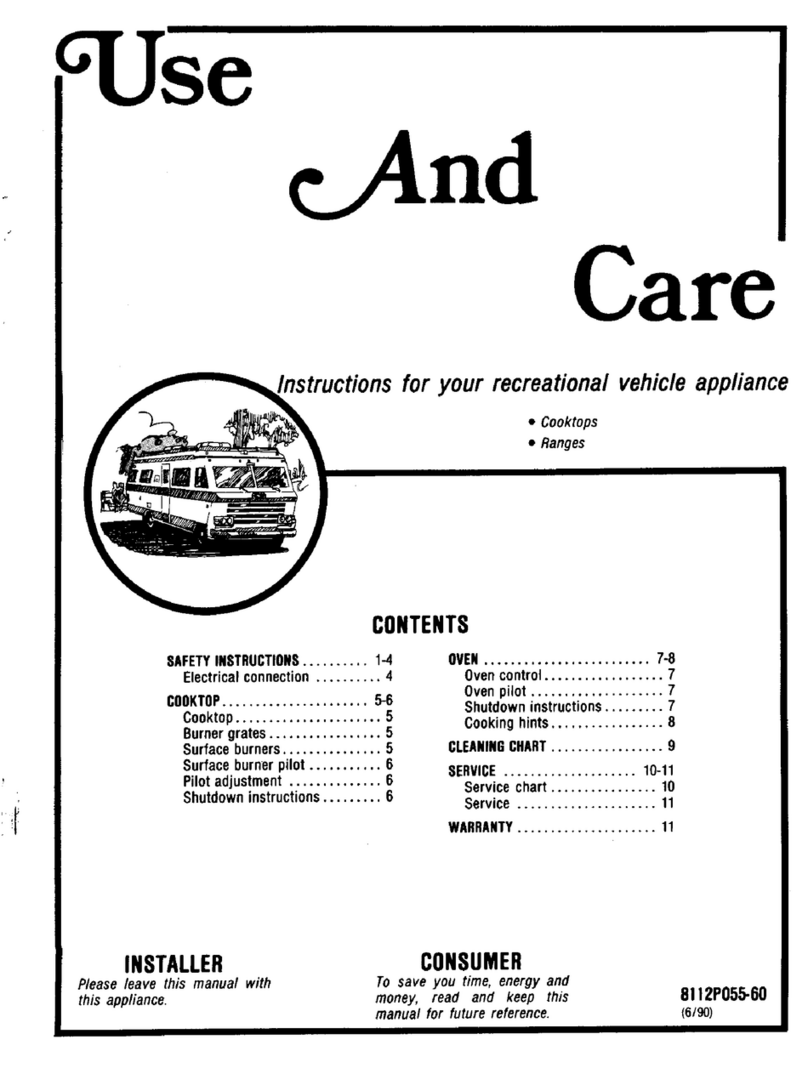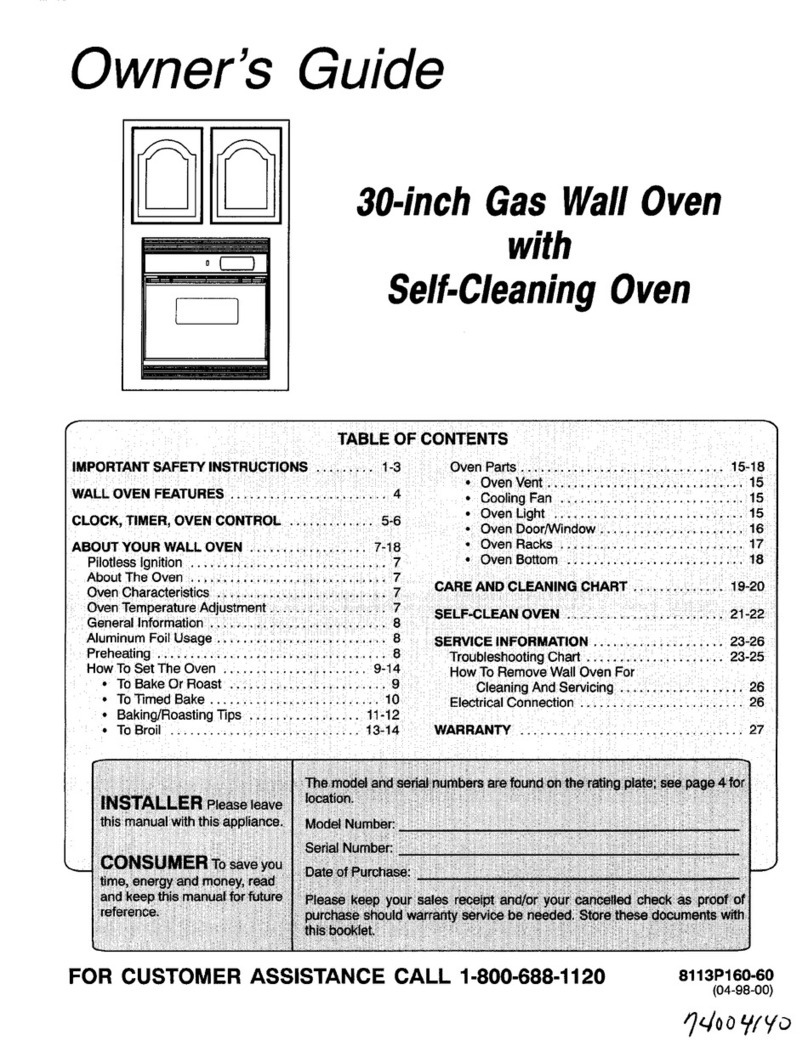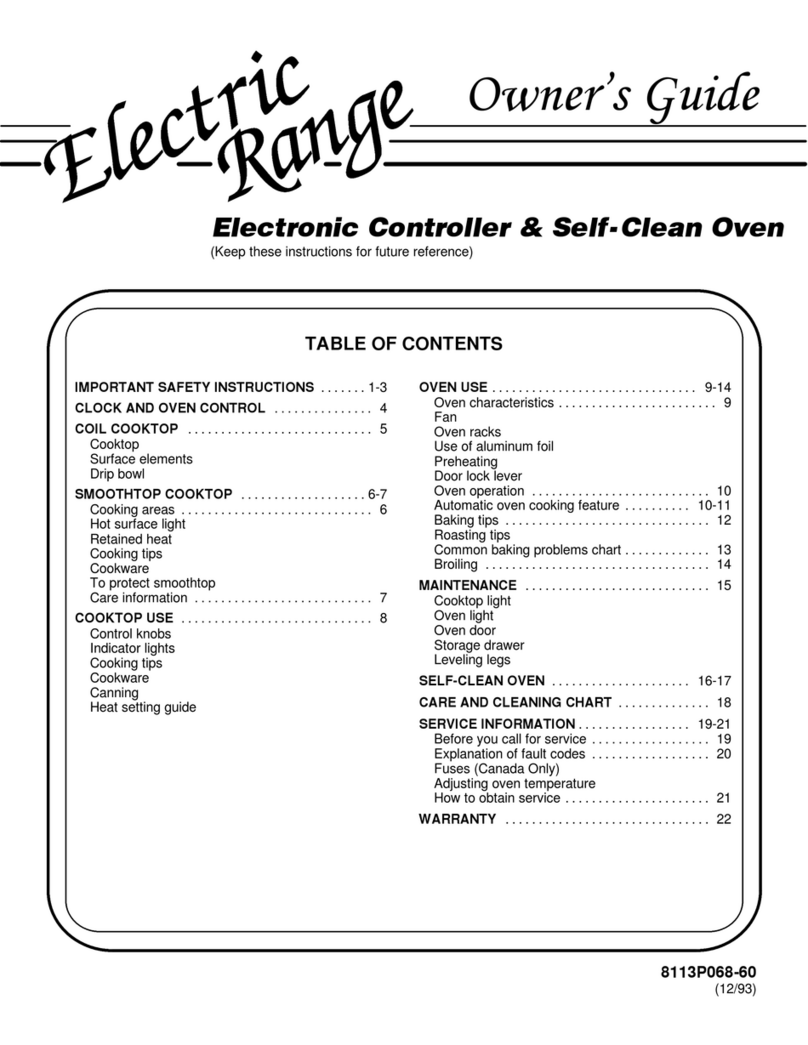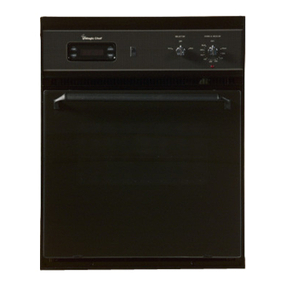SAFETY INSTRUCTIONS
GLAZED COOKING UTENSILS - Only certain types VENTILATING HOODS:
of glass,glass/ceramic, ceramic, earthenware, or CLEAN VENTILATING HOODS FREQUENTLY -
otherglazedutensilsare suitablefor range-top sew- Greaseshould not beallowed to accumulateon hood
icewithout breaking duetothesudden changeintern- or filter.Whenflaming foodsunder thehood, turn the
perature,fan off. Thefan, if operating, may spread theflame.
IMPORTANT SAFETY NOTICE AND WARNING
UTENSIL HANDLES TheCalifornia SafeDrinking Water and Toxic Enforce-
SHOULD BE mentAct of1986 (Proposition65) requirestheGover-
TURNED INWARDnor of California to publish a list of substances known
AND NOT EXTEND tothe State of California tocause cancer orreproduc-
OVERADJACENT tive harm, and requires businesses to warn customers
SURFACE UNITS - ofpotential exposures tosuch substances.
To reduce the risk of
burns, ignition of flam- Users of this appliance are hereby warned that when
mable materials, and the appliance is engaged in the self-clean cycle there
spillage due to unin- may be some low-level exposure to some of the listed
tentionalcontact with the utensil, the handle of a uten- substances, including carbon monoxide. Exposure to
sil should be positioned so that it is turned inward, and these substances can be minimized by properly vent-
does not extend over adjacent surface elements,ing the appliance to the outdoors during the self-clean
cycle.
DO NOT SOAK REMOVABLEHEATINGELE-
MENTS - Heating elements should never be im- DEEP FATFRYERS:
mersed in water. Immersingelement in waterwould Use extreme cautionwhen moving thegreasekettleor
damageinsulating material inside element, disposing of hot grease.
DO NOT TOUCH SURFACE ELEMENTS OR OVEN
OVENS: ELEMENTS, AREAS NEAR ELEMENTS OR INTE-
USE CARE WHEN OPENING DOOR - Lethot airorRIOR SURFACES OF OVEN - Elements may be hot
steam escape before removing or replacing food. even though they are dark in color. Areas near surface
elements and interior surfaces of oven may become
DONOT HEAT UNOPENED FOOD CONTAINERS- hot enough to cause burns. During and after use, do
Build-up of pressure may cause container to burst and not touch or let clothing or other flammable materials
result in injury, contact heating elements, areas near elements or in-
terior surfaces of oven until they have had sufficient
time to cool Among these areasarethe cooktop, sur-
KEEP OVEN VENT DUCTS (located under rear ele- faces facing the cooktop,oven vent opening and sur-
ment; rear corner of cooktop; between oven door and faces near this opening,oven door, and oven window.
control panel of wall oven or on backguard) UNOB- Also,do not allow aluminum foil,meat probes or any
STRUCTED. Blockage of vent prevents proper oven other metal object, other than a utensil on a surface
air circulation and will affect oven performance. Avoid element, to contact heating elements.
touching oven vent area while oven is on and for sev-
eral minutes after oven is turned off. Some parts of the ANTI-TIP BRACKET:
vent and surrounding area become hot enough to WARNING: To reduce the risk of tipping of the appli-
cause burns, once from unusual usage or by excessive loading of
the oven door, the appliance must be secured by a
PLACEMENT OF OVEN RACKS- Always place oven properly installed anti-tip device. To check ifdevice is
racks in desired location while oven is cool.If rack installed properly: Use a flashlight and look under-
must be moved while hot,use care to avoid contact of neath range to see thatone of the rear leveling legs is
potholder with oven element, engaged in the bracket slot. When removing appliance
for cleaning, be sure anti-tip device is engaged when
range is replaced. The anti-tip device secures the rear
leveling leg to the floor, when properly engaged.
-2-
